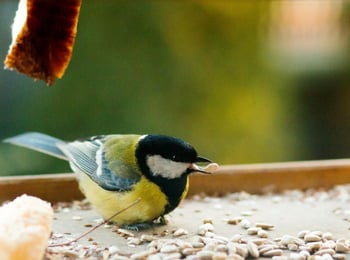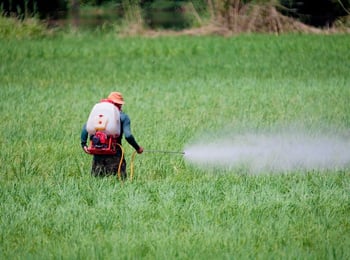
Home / Here on Earth / Wildlife Friendly Landscaping
Wildlife-friendly landscaping means seeking to create landscapes that preserve the existing natural diversity of the region and provide habitats for wildlife that have been displaced due to city development and community growth. In Florida, a lot of development areas are located close to natural wildlife areas which makes everything that property owners do in their landscapes has an impact on the local wildlife.
Here are seven points to consider when landscaping to provide an area that is more wildlife friendly.
1. Reduce Lawn Area
Cultivated lawn areas are unfavorable to wildlife as they do not offer much cover or food to the animals. You can replace some areas of the lawn with natural ground cover as these are more valuable to wildlife than cultivated grass. Some appropriate areas for this are along a privacy fence, around bushes and under trees.
Creating small islands of vegetation is also helpful as these provide cover for small wildlife species who are at risk of becoming prey when they cross open areas. These islands can be created with wildflowers, groundcover or other native vegetation and should be located close to each other to provide adequate cover.
2. Plant Native Vegetation
Native plants offer more sources of food and better cover for local wildlife than non-native plants. Every native plant species is part of a more extensive community with other plants, microorganisms, and animals. Planting native species ensures that wildlife like lizards and rodents will come to the landscape for food and cover, establishing a natural balance and preventing these plants from becoming invasive. These plants will also attract beneficial insects that prey on insect pests while being a food source for animals higher on the food chain, preserving biodiversity.
Also, once established, native plants require a lot less maintenance as they are more adapted to climatic and soil conditions. This reduces the need for irrigation, fertilization, and pesticide use. The Florida Native Plant Society provides information on native plants in Florida.
3. Create Water Sources
Wildlife habitats require the right balance of elements just like nature has; this means introducing a water source in the landscape will greatly benefit the wildlife. The size and scale of the water source depend on your available area. For small areas, installing a birdbath will be sufficient to invite various birds to come and take shelter in the landscape, and if it is a larger area, consider installing a water feature like a pond.
Ponds are beautiful and provide breeding spaces for amphibians along with other semi-aquatic and aquatic species. This space can be enhanced to attract more wildlife by planting the native wetland plants. These plants provide a host of ecological benefits like providing habitat for wildlife both below and above the water and improving water quality by removing fertilizer components like phosphorus and nitrogen from the water, thus controlling algal blooms that are harmful to fish.
4. Add Vertical Layering
Vertical layering in landscaping implies having more plant structure between the ground cover and the canopy of trees, which means eliminating the bare space between the ground and the top of a tree by adding vegetation of different heights to fill the space. Many landscapes just consist of tall trees, low-cut grass, and not much else. This empty plant structure is not favorable for attracting wildlife as there are not enough sources of cover and food.
Vertically layering the landscape with herbaceous plants, shrubs, and understory trees (short trees and young canopy trees that have not reached their full height) will ensure that various wildlife species can take cover in this thick vegetation and feed from the flowers and berries that grow on them.
5. Remove Invasive Non-Native Plants

Certain non-native (exotic) plants are highly invasive; they should not be planted in landscapes or should be removed if they have already been planted as they quickly take over natural habitats. Planting invasive species in individual landscapes can have repercussions far beyond the site as the seeds of these exotic plants are easily carried away from the landscapes where the parent plants are and into natural habitats through water, wind, birds, and animals. Once these seeds are established in these natural areas, they take over native plants, upsetting the natural balance.
When these invasive species take over native plants, the food sources for wildlife inhabiting the area are also reduced, affecting their growth and populations as these animals could have relied on a particular plant for food, but it is no longer available in the region. It is important to avoid invasive exotic species to preserve wildlife habitats.
6. Provide Bird Feeders and Bird/Bat Houses 
Birdfeeders of different designs and filled with different seeds will attract diverse species of birds to the landscape. These feeders and birdbaths should be located at least 15 feet away from any kind of vegetation to prevent squirrels from jumping into them. At the same time, birdbaths and feeders should not be placed too far away from trees to provide the birds a close source of cover from predators.
Adding bird and bat houses to the landscape will not only provide nesting shelters for bats and birds, but other wildlife like gray squirrels and flying squirrels will also use birdhouses when they are unoccupied.
7. Reduce Pesticide Use

Most pesticides are not selective and kill every insect they come in contact with, including beneficial insects. Beneficial insects are essential to a landscape for pollination and prey on insect pests. Additionally, almost all species of wildlife are dependent on insects in some way; even if they don’t eat insects directly, they eat other animals that eat insects. When you spray pesticides indiscriminately, you end up killing the food source of wildlife species and pollinators which means destroying the ecological balance of the landscape.
Avoid the use of pesticides and instead, use biological controls wherever possible to eliminate pests from the landscape. Encourage predatory insects like ladybugs that feed on aphids. If you do need to use pesticides, use them for spot treatments or use selective pesticides that only target a particular species.
Conclusion
Individual landscaping decisions can have a high impact on the surrounding natural environment. It is essential to create a landscape that will create a safe space for wildlife while preserving their natural habitat. If you want to create a wildlife-friendly landscape, Down To Earth is at your service. Our experts are skilled in various fields like horticulture, pest management, design, construction, and installation.
